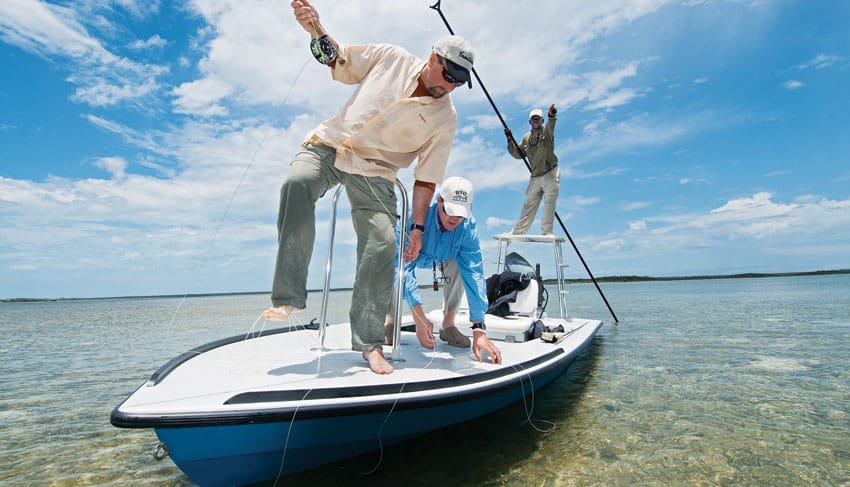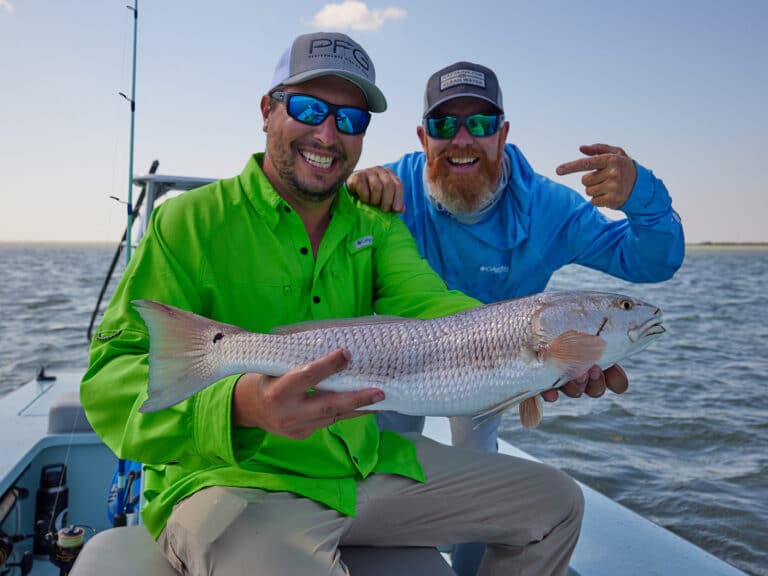
guided fly trip
Even though I’ve been a guide for nearly a decade, I still enjoy showing clients my local waters of Mosquito Lagoon, in Florida. That being said, my real job is arriving on time, coming prepared and working as hard as I can to put clients on fish. I happily accept these responsibilities, but if you as a client take more of a teammate role, your odds of having a productive day on the water increase dramatically.
How Will We Fish?
I like to chat with my clients before each trip, and over the years, almost all of them have asked, “How’s the fishing?” We all like to talk about that, so it only makes sense that I hear this over and over again. But in reality, the answer won’t determine how your trip will go. Every day is different, and regardless of how well the fish are eating or cooperating, it is you, the client, who has the task of putting the fly in the right place.
Perhaps a more appropriate question would be, “How are we going to fish?” Ask this question, and your guide will tell you whether you will be sight-fishing in shallow water, throwing under mangroves or structure, or blind-casting in deeper water with sinking lines. In other words, your guide’s reply can reveal what you should brush up on before your trip.
It’s always smart to practice as much as possible before a trip, but if you just can’t squeeze any tweaking in, be honest. Informing the guide in advance will allow him to set aside a little bit of time for warm-up casts and adjustments before fishing. When you’re staring at tailing fish isn’t exactly an opportune moment to tell the guide that you haven’t picked up a fly rod in months. Once you reach the flats, it’s time to fish, not time to practice.
Gear Checklist
Preparation applies to equipment too. While most guides own quality tackle and don’t mind sharing, many clients prefer to use their own. If you plan to bring your own gear, take the time to check it all out before leaving your house. Examine your line for cracks and twists, and make sure your line-to-leader connection is still intact. Also conduct a basic drag inspection. I have seen my share of failures that have resulted in break-offs. Most issues correlate to storing a reel with the drag tightened. This compresses the material (such as cork), causing it to stick and eventually separate. If you don’t plan to fish a reel often, store it with the drag backed off. And make sure everything inside the reel is lubricated properly. If you don’t feel comfortable doing this yourself, take it to your local fly shop for a tuneup.
Something else that can and often does make a difference is assembling and stringing up your rod before you step aboard the skiff. All too often, the guide’s intuition is accurate, and the fish are waiting for you at the first spot of the day. It’s awfully tough to cast to fish with a broken-down rod.
When it comes to footwear, well, it can be a major enemy at times. I have seen countless blown shots because of shoes. Personally, I prefer fishing barefoot. Doing so gives you a sense of awareness with your fly line because you can feel it on your skin.
I realize fishing barefoot doesn’t work for everyone, so if you do wear shoes, just be mindful that almost any type has features prone to snagging fly line. Take a peek down every once in a while to make sure the line isn’t caught on anything or under your feet.
No matter what you do or how often you check the deck, line-management issues will happen. If you decide to wear shoes while you fish, be wary of the noise they make as you step or shuffle free the line. It might not sound loud, but the noise and vibrations are often enough to spook nearby fish.
If you plan to use the guide’s equipment, tell him which hand you reel with. I reel with my left hand, so my reels are set up for left-hand retrieve. However, if I know beforehand that you reel with your right hand, I’ll suggest packing some of your reels for use on my rods or make other arrangements before the trip.
**
To Tie or Not to Tie**
Another question I often hear is, “What flies do I need to tie?” We all enjoy catching fish on flies we’ve tied, but unless you have fished an area before, it’s really hard to know exactly what to tie. I don’t even know what we will use until we get on the water and determine how the majority of fish are acting on that particular day. I try to let them dictate what they want to eat and how they want to be fished. Ninety percent of the time, you will use something the guide has in his fly box. This is not to say you shouldn’t tie for the trip, because I have seen some great flies brought on my skiff that have caught plenty of fish. But I do suggest using your spare moments before a trip wisely. The time you spend tying might be better spent sharpening your casting skills or making sure all your equipment is up to par.
The moral is to be open and honest with your guide about your fishing abilities and expectations — a good guide will go above and beyond to accommodate you and your needs. Most of the time, though, there is a learning curve from one location to the next, and there are definitely things you can do as a client to make your trip run smoother and, ultimately, be more enjoyable.









